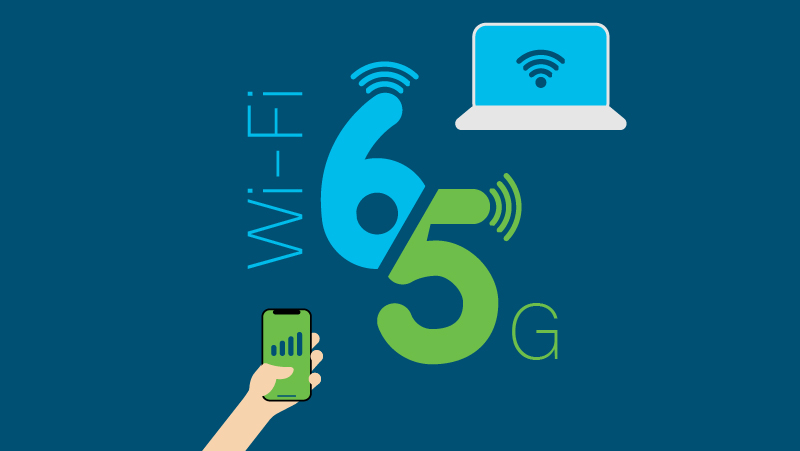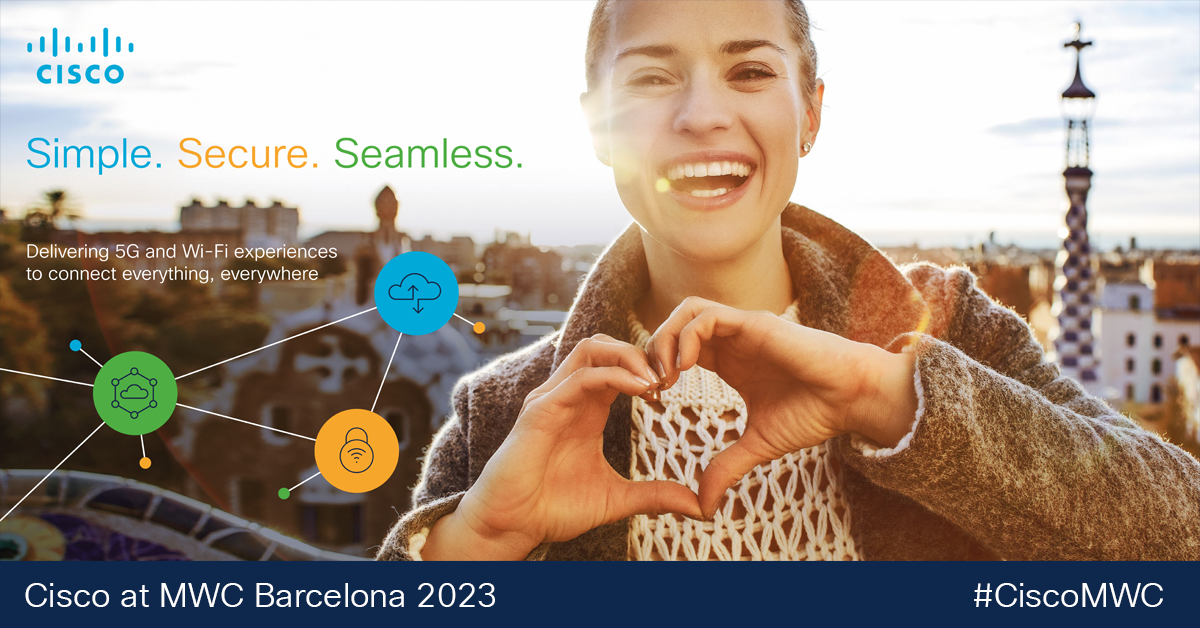So, you’re all prepared for the next innovations in mobility and looking for next-generation speeds and more bandwidth. But with all of the hype around both Wi-Fi 6 and 5G, what can each of technologies actually do? With Wi-Fi officially turning 20 this year and World Wi-Fi Day celebrated on June 20th, let’s learn how the newest mobile technologies are changing the future. Here we’ll break down some basic definitions and capabilities of Wi-Fi 6 and 5G, and share how the two can actually work in-sync.
Wi-Fi 6 breakdown
Wi-Fi 6 is the latest iteration and sixth generation of Wi-Fi, also known as 802.11ax. Some of the capabilities include providing increased speed, lower latency, and more device density. Wi-Fi 6 speeds can reach nearly 10 Gbps, which is 40 percent faster than Wi-Fi 5. Wi-Fi 6 is also the choice for indoor enterprise networks, because it is easy to use, maintain and scale—making it a good choice for places like arenas, stadiums, and convention centers. New Wi-Fi 6 devices can still communicate with access points that run older versions of Wi-Fi, so installed APs can still be leveraged.
See also: Cisco Champions on Wi-Fi 6 and 5G
In terms of a timeline, you will see Wi-Fi 6 roll out quicker than 5G. Cisco released its own Wi-Fi 6 access points in April, with some users already using Wi-Fi 6 on their mobile devices. Within the next three years, most users and enterprises will transition to Wi-Fi 6. Get ready!
5G breakdown
The fifth generation of wireless, or 5G, is created to increase the speed and capacity of wireless networks. While 4G was about connectivity, 5G is all about creating new experiences, speed, and scale. Unlike Wi-Fi 6, 5G will be the best choice for outdoor networks, especially in cases where you’ll be moving quickly, like in a car or a train.
You can look forward to seeing more 5G capabilities in the next few years. First, 5G will be used for fixed wireless applications like in residential and branch spaces. In 2019 through 2020, service providers will offer 5G to select cities. From 2021 to 2023, we will see roll outs of 5G throughout the U.S., Europe, Japan, and China. We will need increased mobile speed and connectivity in the future, as Cisco’s annual Mobile VNI Forecast reports staggering numbers of users and traffic. By 2022, about 70 percent of the world’s population will be mobile users and there will be more than 422 million 5G connections globally. The average speed of 5G will be 170.2 Mbps, a whopping 4 times faster than 4G.
How they will work together
The answer to the question “5G or Wi-Fi 6” is yes! In the future, you won’t have to choose between the two, as 5G and Wi-Fi 6 will form a complementary relationship. The technologies are built from the same foundation and will work together to support different things. What this means is the ability to connect even more devices, creating benefits for mission-critical IoT devices in manufacturing, healthcare, energy, and more. This also means we will get to enjoy more immersive applications like VR and augmented reality networks. 5G is able to pick up in areas where Wi-Fi 6 can’t reach—for example, when IoT devices move outside of an indoor space, a sensor can still connect via 5G.
See also: Wi-Fi 6 and 5G explained
Cisco is playing a key role in how Wi-Fi 6 and 5G will roll out, by helping service providers reduce costs and mitigate risks. With more connected devices, more traffic will be pushed to the edge and service providers will need new levels of scale and automation. The rollout of 5G also means a bigger attack surface and all-new security needs. Cisco is able to mitigate risk with its security architecture, safely connecting networks, clouds, users, and applications. Cisco can help users and corporations ensure that their network is ready for Wi-Fi 6 and 5G by providing services for implementation, optimization, and training. Check out how you can get started here.
###
We welcome the re-use, republication, and distribution of "The Network" content. Please credit us with the following information: Used with the permission of http://thenetwork.cisco.com/.




